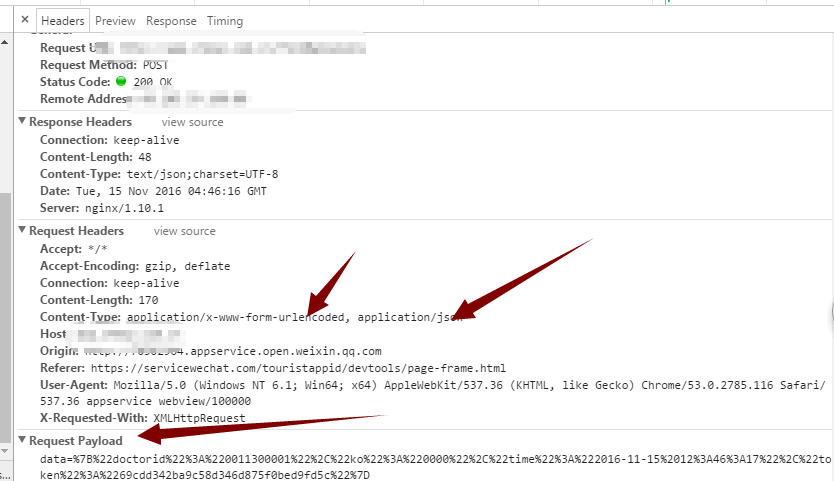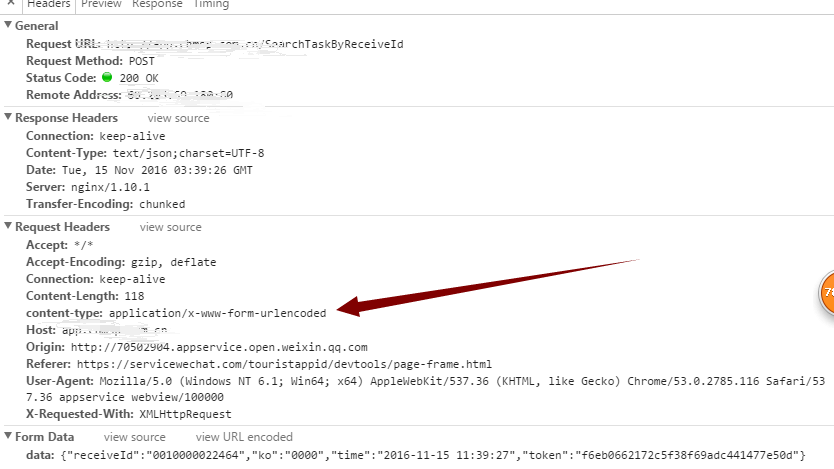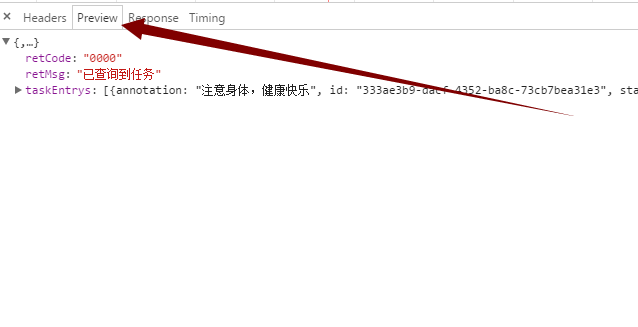溫馨提示×
您好,登錄后才能下訂單哦!
點擊 登錄注冊 即表示同意《億速云用戶服務條款》
您好,登錄后才能下訂單哦!
這篇文章給大家分享的是有關微信小程序網絡請求封裝的示例分析的內容。小編覺得挺實用的,因此分享給大家做個參考,一起跟隨小編過來看看吧。
在這里首先聲明一個小程序文檔的bug,導致大伙們在請求的時候,服務器收到不到參數的問題
示例代碼:
wx.request({
url: 'test.php', //僅為示例,并非真實的接口地址
data: {
x: '' ,
y: ''
},
header: {
'Content-Type': 'application/json'
},
success: function(res) {
console.log(res.data)
}
})其中header 中的Content-Type,應該用小寫content-type才能讓服務器收到參數。讓我折騰的好久,改了服務器仍然不行,原來是這個問題。參數在request payload中,服務器不能收到,使用如下轉換之后
function json2Form(json) {
var str = [];
for(var p in json){
str.push(encodeURIComponent(p) + "=" + encodeURIComponent(json[p]));
}
return str.join("&");
}
最終還是認為是content-type的問題。最后改小寫就ok,覺得微信這么牛逼的團隊,犯了一個很低級 的錯誤,把我開發者折騰的爬了。不說,上代碼吧。
1 、Http請求的類
import util from 'util.js';
/**
* url 請求地址
* success 成功的回調
* fail 失敗的回調
*/
function _get( url, success, fail ) {
console.log( "------start---_get----" );
wx.request( {
url: url,
header: {
// 'Content-Type': 'application/json'
},
success: function( res ) {
success( res );
},
fail: function( res ) {
fail( res );
}
});
console.log( "----end-----_get----" );
}
/**
* url 請求地址
* success 成功的回調
* fail 失敗的回調
*/
function _post_from(url,data, success, fail ) {
console.log( "----_post--start-------" );
wx.request( {
url: url,
header: {
'content-type': 'application/x-www-form-urlencoded',
},
method:'POST',
data:{data: data},
success: function( res ) {
success( res );
},
fail: function( res ) {
fail( res );
}
});
console.log( "----end-----_get----" );
}
/**
* url 請求地址
* success 成功的回調
* fail 失敗的回調
*/
function _post_json(url,data, success, fail ) {
console.log( "----_post--start-------" );
wx.request( {
url: url,
header: {
'content-type': 'application/json',
},
method:'POST',
data:data,
success: function( res ) {
success( res );
},
fail: function( res ) {
fail( res );
}
});
console.log( "----end----_post-----" );
}
module.exports = {
_get: _get,
_post:_post,
_post_json:_post_json
}2、測試用例
2.1 get請求
//GET方式
let map = new Map();
map.set( 'receiveId', '0010000022464' );
let d = json_util.mapToJson( util.tokenAndKo( map ) );
console.log( d );
var url1 = api.getBaseUrl() + 'SearchTaskByReceiveId?data='+d;
network_util._get( url1,d,
function( res ) {
console.log( res );
that.setData({
taskEntrys:res.data.taskEntrys
});
}, function( res ) {
console.log( res );
});2.2 POST請求
//Post方式
let map = new Map();
map.set( 'receiveId', '0010000022464' );
let d = json_util.mapToJson( util.tokenAndKo( map ) );
console.log( d );
var url1 = api.getBaseUrl() + 'SearchTaskByReceiveId';
network_util._post( url1,d,
function( res ) {
console.log( res );
that.setData({
taskEntrys:res.data.taskEntrys
});
}, function( res ) {
console.log( res );
});
效果

感謝各位的閱讀!關于“微信小程序網絡請求封裝的示例分析”這篇文章就分享到這里了,希望以上內容可以對大家有一定的幫助,讓大家可以學到更多知識,如果覺得文章不錯,可以把它分享出去讓更多的人看到吧!
免責聲明:本站發布的內容(圖片、視頻和文字)以原創、轉載和分享為主,文章觀點不代表本網站立場,如果涉及侵權請聯系站長郵箱:is@yisu.com進行舉報,并提供相關證據,一經查實,將立刻刪除涉嫌侵權內容。